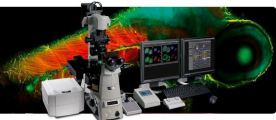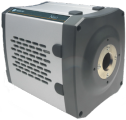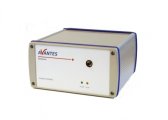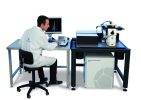
This basically refers to the formation of broad spectra, continuous in nature through the propagation of short but highly powered pulses.
It was first observed in 1970 through a nonlinear media. Supercontinuum does not selectively cover a specific phenomenon but a wide plethora of effects leading to a spectral broadening of the pulses. The terms, ‘bright as laser’ and ‘broad as light’ can be used to describe the Supercontinuum light. Fluorescent and incandescent light provide broad-spectrum above 400 nm to 1500 nm. However, the intensity of the light is limited to the efficiency of the gas excitation and the quality of the filament in use. Additionally, coupling light into the fiber is a little bit challenging. This results in low brightness source, hence low production of power. The involved effects depend on dispersion in material and counts to self-modulation, scattering and solution matching. There is a high demand for supercontinuum source now and many companies setting up camps in which people with invention ideas are invited to compete for prizes as they try to develop the scarce resource. The winners for the challenges are rewarded as their ideas are adopted and implemented.
On the other hand, lasers have high brightness, spatial and coherent light which facilitates coupling to a fiber and outstanding beam quality. However, lasers are monochromatic, hence, if more than one wavelength is required, extra lasers with specific wavelength are needed to balance them in order to cover the broad spectrum. A Supercontinuum source bridges the gap by providing ultrabound white light spectrum characterizes with a single mode beam of light. The characteristics show excellent stability in pointing and the laser brightness is also fine.
Non-Linear Fibers
Although Supercontinuum light can be observed through a drop of water if given enough pumping power, the photonic fibers are the best media for viewing Supercontinuum light. Using this gives a perfect way possible to convert light into both high and low wavelength just the same way super wide spectra forms. This leads to light covering a wide area than an octave.
Local Non-Linear Fibers
The local nonlinear fibers are attractive and ideal for studying nonlinear effects having the property that they have a long range. Normally the fibers are designed to be single mode.
Advantages of Non-Linear Single-Mode Fibers
- Easy to splice into solid due to the lower air filling fraction nature
- Easy to align and focus with free space coupling since less light is focused on the cladding region.
- They are available in polarization to reduce pumping power, lower threshold for a wider spectrum
- Most of the applications require a strict single mode operation. Additionally, some supercontinuum fibers are available in polarization, thus maintaining the ability to reduce the pumping required. This lowers the threshold for a wide spectrum supercontinuum generation further.
Commercial Supercontinuum Sources
There have been some technical challenges for people to compete in ensuring a reliable source of Supercontinuum light capable of satisfying the rising demand for supercontinuum source. The production of high-quality fiber modes has increased. The combination of robust fiber and lasers of photonic crystal fibers technology has resulted in the construction of some platforms which lead to the creation of a product which is not only reliable but serviceable too.












